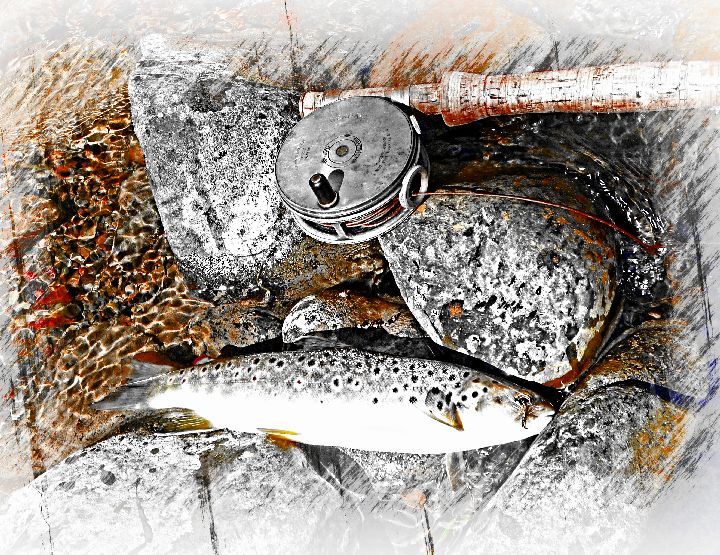Silk Fly Lines.

So why exactly would you take from your reel a perfectly good plastic fly line and replace it with one of those old school silk lines?
Well, that depends on where you fish, what you see as important in a fly line and how prepared you are to do the very little maintanence required by a silk line.
Fistly, a correctly looked after silk fly line will last many, many years and will far and away amortize into a cheaper line than a decent plastic line and a cheap plastic line just wont last.
Next, lets get the maintanence side of things out of the way because this is the issue most used as why a silk line is too much trouble.
When you're streamside in order that the line may float it first has to be dressed with an oil, most use Red Muscillin, Terenzio supplies almost a life time supply of grease with his lines as well as a silk leader and this is what he uses to dress the line you will receive. Dressing the line is simplicity itself and there are two good ways of going about it. The other way is to tie the end to a tree, walk the line out and dress it stretched out.
Either way takes about 5 minutes and is no big deal.
If it happens that the stream is especially riffily the line may just wind up sinking due to all of the water activity, if you use a DT line as I preffer you can swap ends of the line and continue fishing but this is a rare event if you properly dress the line before the first day's cast.
At the end of the day's fishing you strip the line off the reel and drape it in loops over the back of a chair or use a line winder and make sure it's bone dry before winding it back onto the reel. It's really no trouble and you may just find it a nice finish to the day.
That's about it until the end of the season when you clean it if necessary, make certain it's bone dry and leave it on the reel or remove it and loosely coil it and keep it in a paper bag for maximum drying potential.
If the line becomes very dirty and needs a decent cleaning Reed Curry tells you how here.
It's important that if you use Mucilin that you use the red not the green. The red is animal fat based and can be washed off when you want to clean the line, the green is silicon based and is said to be very difficult to remove when the time comes.
Now, if you do these things you'll have a perfect fly line for many, many years.
Now to the reasons you'd use a silk fly line.
A silk line has no memory, ever.
People get a bit confused about why a silk line behaves differently to a plastic one but it's really very simple when you consider that the AFTM line weight for the first 30 feet of a silk line or plastic line is the same but because the silk line is more dense it's thinner for that weight.
This matters because it will cut through the air easier so it's less prone to gusty conditions and cuts wind a lot better than a plastic line so shoots better.
Now, because the weight of the line is the same but the silk line is thinner it also makes contact with the water in a smaller cross section so all things being equal it will make less disturbance on the water when coming down and lifting off and that's never a bad thing.
That's about it technically speaking and it's as you can see pretty basic but there are other considerations.
Before the days of plastic lines if you wanted a sinking line you didn't dress the fly line so it sank.
By my calculations that means three lines and spools if you use plastic lines compared with one if you use silk. If you fish at night the sound and feel of the line shooting through the guides is a much easier way of judging the amount of line on the water than trying to see it and finally there is to my mind the least import but neverthless justifyable tradition of using silk and that's OK too.
Needless to say this line dressing waterproofs the line and makes it float. When the oil's gone the line will sink.
If you dress the line once it's wet you'll trap moisture in the line and that will encourage rot which will reduce the life of the line
This being the case you therefore have to dress the line correctly at the start of the day's fishing so it will float for the entire time you're fishing without the need of re-dressing the line while it's wet.
I like to sit by the stream and look for fish while I strip the line from the reel, dressing it using the pad that comes with the Red Mucilin or a handkerchief if I use Terenzio's grease as I wind it back on and do this a couple of times especially for the last 20 feet or so of the line where it gets most wetting during use.
If you wanted a sink tip line you don't dress the tip so the tip sinks.
Now because I fish mainly dry I don't wan't to carry two other types of lines and spools for just in case but I use silk so I don't have to.
